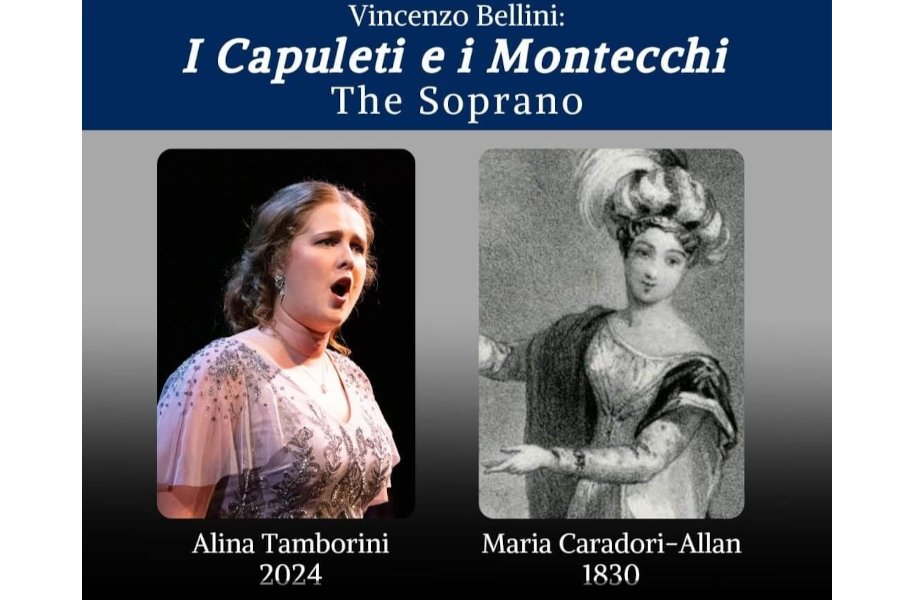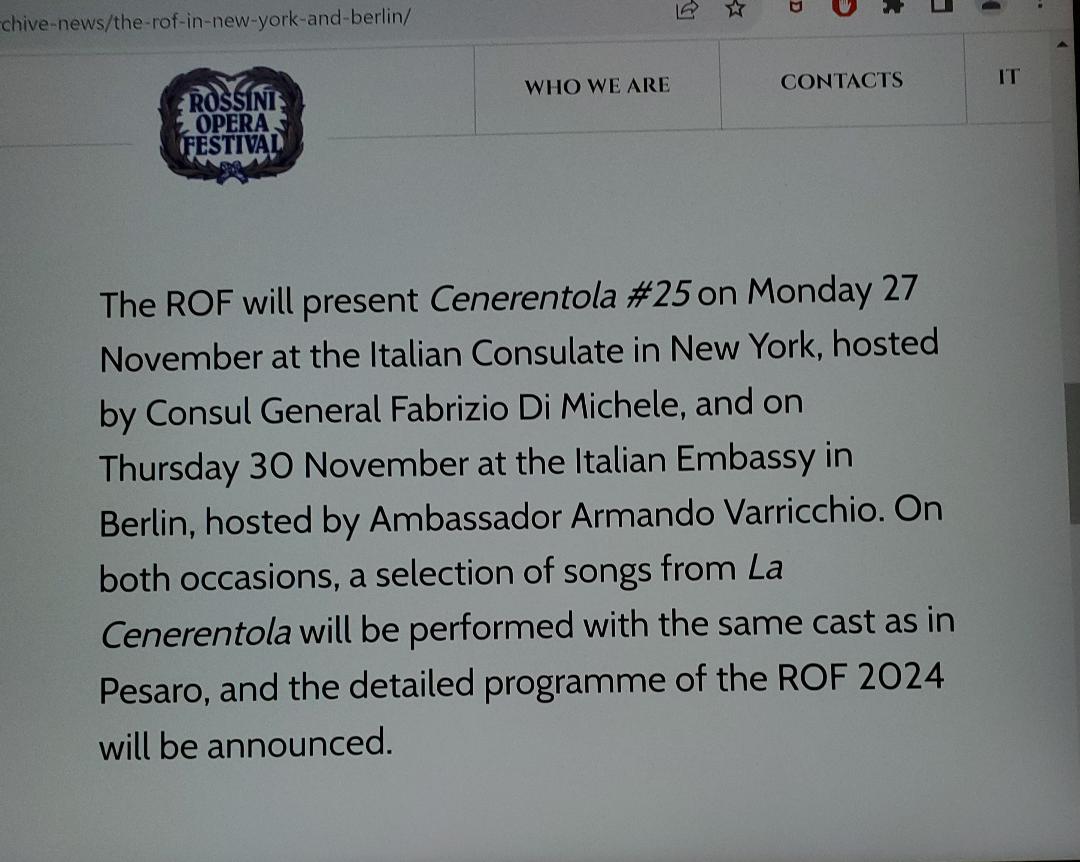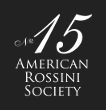We couldn’t resist a shop that is “Rossini approved”

We are not in the habit of promoting merchandise on this site but felt we should alert Rossini lovers (particularly in the US) that there is a way of supporting real Bel Canto by visiting the Teatro Nuovo shop. The link is here : https://www.teatronuovo.org/tn-gift-shop?fbclid=IwZXh0bgNhZW0CMTAAAR0uOQzOxh9r1IgwZm5FKm8N356TefAmFG693AfRYkLFkajiuoLrdSdzcCY_aem_ZmFrZWR1bW15MTZieXRlcw.
Interview with Soprano Alina Tamborini

Alina Tamborini who will be appearing again with Teatro Nuovo in July kindly agreed to an interview for the American Rossini Society Newsletter. We are happy to present it here as we think it may be of interested to a broader audience than simply members of the ARS. Although she is not singing Rossini in this season of TN, she has appeared in Rossini roles and clearly has some future Rossini roles on her wish-list!
What sparked your interest in opera? Many singers mention music in their home, participation in choruses, and things like that.
My interest in opera began in college, but my love of music started way before that. I’ll circle back to opera, but let me give you a bit of context first! My parents enrolled me in music classes at the Michigan State University Community Music School when I was an infant/toddler. These classes were crucial in shaping my early musical development. Fun fact: I ended up teaching those same classes 20 years later when I was a music education major at MSU. I’ve always been drawn to music; like many musicians, I took piano lessons as a kid. However, the specific instances my family pointed out that hinted at my future as a musician were when I’d press my face as close as possible to the big speakers connected to our record player at home. I’m so grateful I didn’t damage my ears!
Skipping ahead a bit past the endless hours of singing princess songs, I started out as an oboe player in band and orchestra with choirs and musicals also playing a pivotal role in my musical journey. I found a great group of friends who were talented musicians and gave me insight into the music world. When I got to MSU for oboe performance and vocal music education, I saw a production of Sondheim’s A Little Night Music performed by vocal performance majors. I was hooked from that moment on. The next semester, I sang in the chorus for The Magic Flute and La Bohème, and that’s when I really felt the pull towards opera. I loved the oboe, and I credit much of my success as a singer to my experience playing it.
My first opera role was Despina in Mozart’s Così fan tutte. I probably had no business tackling that much Italian at the time, but I thought I was doing great! I’m only mildly embarrassed every time I go back and watch that performance, but it is a great reminder of how far I have come! Thankfully, my mentors during college, grad school, and Teatro Nuovo helped guide me through my journey and shape me into the singer I am today.
You recently appeared in Il Signor Bruschino at Bronx Opera where you sang the role of Sofia – in English! How much of a challenge is it to sing Bel Canto in English? Do you, as a singer, have any input in the translation (i.e., where words don’t really fit the music)?
Singing Bel Canto in English isn’t necessarily more challenging than in other languages for me, but singing in English generally has its own set of challenges. Conveying emotion and acting is fine; it’s keeping consistent technique that’s tricky. When I learn a role in English, especially one not originally written in English, my singing sometimes starts to sound too much like my speaking. Sure, the vowels change occasionally, which can make a line feel less comfortable. Typically, I learn any fluid passages on a vowel, ideally the one in the original score. Sometimes the vowels and consonants can make the line a bit difficult, but the intent remains the same! Despite its challenges, I actually enjoy singing in English! That said, I do prefer singing music in its original language. It’s hard to find a language as comfortable for the voice as Italian.
When I’m singing translations, I don’t usually have much control over the words, but directors are often receptive to advice. The folks at Bronx Opera love input. They even write many of their translations themselves! Creating an English translation must be an exciting challenge. These Italian libretti are poetic gold mines!
You have quite a diverse repertory and although your appearances seem to be mostly in the “greater NYC area,” you apparently have performed in China! What was that like?
Performing in China was probably the most memorable musical experience of my life! MSU has a wonderful relationship with the Beijing Conservatory of Music. They do an exchange program every year where we spend a week at each other’s institutions. I was lucky to be part of their 10th anniversary, which meant instead of fantastic recitals, we were doing full operas. The concert was a double bill of a Bernstein revue and The Savage Land, performed in Mandarin. Each show was double cast in America and China, with the casts mixed once we got there. Singing in Mandarin would have been amazing, but I was thrilled to share my love of Bernstein with my Chinese colleagues. The Chinese opera singers were fantastic hosts, and we learned so much from them about music, their culture, and of course, their food! Equally exciting was bringing them to our campus and sharing what it’s like to be a music student in the Midwest! My in-laws are planning a trip back to China soon, so I’m excited to return and experience it all over again with the same awe and wonder.
Something Will Crutchfield and the folks at Teatro Nuovo taught me is that singers can, and many times should, handle a wide range of music. I’ve tried to embrace that by exploring all forms of classical music, from Purcell and Handel to Mozart, Rossini, Verdi, Britten, and contemporary operas, some of which are currently being written by my friends and colleagues. It keeps my voice and mind sharp.
Your association with Teatro Nuovo is a wonderful example of moving up the artistic ranks, advancing from Apprentice Artist in 2018 to Resident Principal Artist in 2020. What was the experience like working with such a group of dedicated musicians and coaches?
My first summer with Teatro Nuovo was overwhelming in the best way. I left every rehearsal inspired and filled with knowledge and a drive to keep devouring this art form. I had never spent so much time with so many people who knew so much about something so important to me. They are all incredibly smart. Like really truly, the smartest people I know! Even now, going into my sixth summer with them, I continue to learn so much about the repertoire, the poetry, the compositional styles, the ornamentation, the orchestras, and more. I have to give a special shout-out to the orchestra. All of the instrumentalists are in the workshops and trainings with the singers, learning about the same material. Every time I stepped into a rehearsal with that orchestra, I felt immediately comfortable. Knowing they have the same knowledge base as I do makes the creative process so much smoother, more collaborative, and more authentic. This also shows how invested Teatro Nuovo is in its artists. Every single coach, musician, director, and stage manager is deeply invested in our success.
Although you have not yet performed much Rossini (the cancellation of Il Vero Omaggio was a real loss), are there Rossini roles you would like to add to your repertory? If so, which ones, and why?
The cancellation of Il Vero Omaggio was definitely a tough loss! Maybe one day! I still use some fragments of the music to help warmup my voice. Lots of tricky sections that have helped inform other roles for me vocally. There are absolutely a few Rossini roles I would love to add to my repertory. One of the most exciting roles for me would be Armida. My coach during my undergrad presented one of her arias to me as an étude. He showed me the first line of music and asked, “Do you know this?” I said, “No.” He said, “Good, don’t look anything up and don’t listen to anything.” Armida’s aria, “D’amor al dolce impero,” has a theme, two variations, and a coda. Every few weeks, once I felt comfortable with one section, we’d add a new one. It was the first time I delved into the intricacies of bel canto music, the first time I sang neighbor-tone triplet figures, the first time I sang in chest voice, and the first time I ornamented anything beyond a few turns in Mozart arias. It’s the piece I spent the most time learning, so I’d love the chance to sing the role one day. Other roles I’m eager to add: Amenaide in Tancredi, Ninetta in La Gazza Ladra, Mathilde in Guillaume Tell, and Clorinda in La Cenerentola. I fell in love with Tancredi and La Gazza Ladra at Teatro Nuovo.
You will be appearing in Teatro Nuovo’s I Capuleti e i Montecchi as Giulietta with Jakob Lehmann conducting. Bellini is, of course, known for his exquisite melodic lines. Does this require even closer collaboration/trust with a conductor than usual?
Yes, absolutely! Thankfully, I have unending trust in Jakob and the entire Teatro Nuovo orchestra. I know their sound, I’m familiar with their sound, I love their sound. And I think they feel similarly towards me. Beyond familiarity with the orchestra and conductor, without a traditional stand-in-front, wave-a-baton conductor the singers are encouraged to take more control over the music. Everyone is creating collectively and listening deeply. It is thrilling! Working with a conductor like Jakob Lehmann, who understands and respects these demands, makes the process both challenging and incredibly rewarding.
A mystery woman
Her identity will be revealed if you follow the link to https://www.teatronuovo.org/
Her Rossini connection? Neither a favored singer, nor a protagonist in one of his operas, but rather a composer whose works he admired and promoted. He did not get to hear this work on stage, but you do, if you come to either of the two performances given by TN.
When less is more

One reason it is hard to build audiences for Rossini in the US is lack of resources and the belief that there has to have a sizable budget to mount something grand. Professional musicians (though usually underpaid) do not come cheap. But the picture is not so bleak because there are are community and university-based groups who can and do fill the void. Attending such performances can have its rewards, one hears something new, one appreciates and finally one supports groups which may develop professional opera singers, and at a minimum help develop core audiences for “neglected” masterpieces.
Recently a group at MIT performed La Cenerentola, not the easiest of Rossini’s operas to tackle. They did it with devotion and commitment and the rewards for the listener were many. Not having an orchestra at their disposal, they enlisted and very fine pianist who tackled the piano reduction of the score with amazing skill and enthusiasm. Not having a “conductor” or prompter, they miraculously delivered the sextet with no “flubs” and superb timing which is what is needed to pull off the brilliance of this piece. And, lastly, they sang as though the words mattered. Not “burdened” with a director /production whose ideas might not be in harmony with those of the composer and librettist, they seem to have found their guidance solely from the music and the text. What a refreshing experience for the audience. More of this, please.
The cast was gracious enough to pose for a picture after the performance. From left to right: Reidyn Wingate, Jakob C. Dahl, Carles Boix, Grace Anderson, Allison Hamilos, Srini Raghuraman, Aditya Raguram, Lani Lee, and Ruofei Jia.
We are posting the program notes so that you can read about them and this wonderful project.
La Cenerentola Program Notes (1)Used with permission.
Callas 100

There are still people alive today who experienced Maria Callas in person. On December 2nd, Teatro Nuovo is hosting what promises to be a fascinating event in observation of Callas’s 100th birthday.
(Our picture of Callas it taken from their website where more information is available: https://www.teatronuovo.org)
The American Rossini Society was fortunate to receive the following observations about the Callas-Rossini connection from Sergio Ragni, whose knowledge is only matched by his passion and energy. Here is what he had to say (with apologies for flaws in translation).
“Despite having had the opportunity to sing only three titles from Rossini’s works, Callas always considered the composer to be one of the main points of reference for her artistic training. Forerunner of a revolution destined to supplant the categories of light soprano, lyric soprano, and dramatic soprano, Callas from the time of her years at the conservatory tried her hand at Rossini’s bel canto works, aware that in those she would find the most suitable interpretation for the development of a vocal technique comparable to that of a virtuoso of any instrument. Even before starting the study of interpretation, the perfect execution of all the indications in the score will constitute the basis for any further study of the role to be performed. “If there is a trill indication- Callas says to a student- you must be able to perform it as well as a pianist does it. You can’t pretend that it isn’t there”. Here lies the essence of Callas’s contribution to the return of a singing style closely linked to absolute technical mastery.In the 1950s, Callas’s so-called rivals based their fame on a vocal arrogance that was completely unrelated to the precise observance of the score’s prescriptions.
Rossini’s music is the most difficult there is for a singer. Only in possession of a formidable technique will it be possible to exalt the greatness of the music in all its value. In a concert in Greece in 1943, after an “Inflammatus” from “Stabat Mater”, Callas even tried her hand a pages of the very unknown Otello, alternating the “Song of the Willow” with Otello’s “Ah,si, per voi gia sento”! This early familiarity with Rossini’s music made her the ideal interpreter of the 1950 rediscovery of “Il Turco in Italia” at the Teatro Eliseo in Rome. But the greatest affirmation of her interest in Rossini came in 1952 in Florence with Armida. Her exhilarating interpretation made it possible to rediscover the authentic scope of the serious Rossini of the hitherto completely neglected Neapolitan period. The score used by Callas is full of annotations, there is not a bar that does not have underlining or references. Callas felt exalted by the virtuosity of the part and was struck by the dramatic potential of Rossini’s coloratura. Her interpretation of the role remains unsurpassed to this day.”
Sergio Ragni, Napoli, October 2023
Coda: The “ma” heard round the world refers to Callas’s “Una voce poco fa” immortalized in numerous Youtube videos.
From the ROF newsletter with updates

Update on the event at the Italian embassy in NYC on Nov 27th.
“The ROF will present the project Cenerentola #25 on Monday 27 November at 6 pm at the Italian Consulate in New York, hosted by Consul General Fabrizio Di Michele. On this occasion, a selection of arias and duets from La Cenerentola will be performed by Chiara Tirotta, Pietro Adaini and Giuseppe Toia, and the detailed programme of the ROF 2024 will be announced”
According to our sources, admission is free and all are welcome but see below.
Update: Admission is free, but one has to rsvp;
rsvp.newyork@esteri.it
Promoting Rossini

Once in a while, someone writes about Rossini with the passion he deserves. In particular this recent item by Patrick Summers, ( Artistic and Music Director of Houston Grand Opera) conveys why Rossini is still important and perhaps is not getting the type of performances that present him at his best. Many scholars write ( and have written) about Rossini and although performers may not necessarily “dot the I’s and cross the T’s” as scholars would, we think this is really great! Of course maestro Summers writes about operas, but Rossini DID NOT stop writing music when he stopped writing for the stage; The CD set on Naxos of “Peches de Vieillesse” by Alessandro Marangoni proves that!
Let’s hope this bodes well for Rossini at HGO!
Summers_Forever_Young
Dec 25: Looking to the future
Often the last window on an advent calendar is quite special. Here we offer you “orchestra” seats for one of the most moving Rossini performances that New York has experienced in recent times. It serves as a reminder that often the best Rossini performances are those that try to get as close to the composer as possible. Big stars, sets, costumes, nor concepts are not needed for works like these.
Thank you to the team at Teatro Nuovo ( in particular Jakob Lehmann )whose commitment to Bel Canto in general and Rossini in particular is a promising light along the path to the next Rossini revival.
